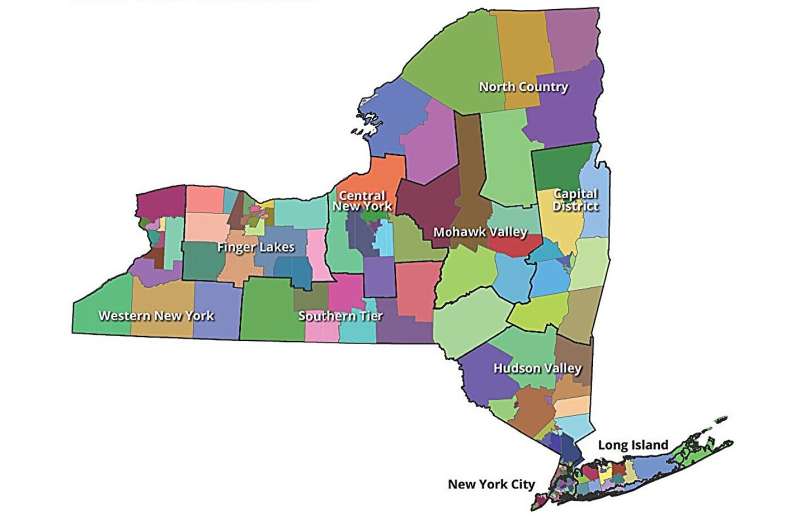This article has been reviewed according to Science X's editorial process and policies. Editors have highlighted the following attributes while ensuring the content's credibility:
fact-checked
trusted source
proofread
Study pinpoints high-need areas for oral health services in New York

Oral health plays a critical role in a person's overall health and well-being, yet many New Yorkers face limited access to the oral health services they need. Identifying where these needs are most acute can help guide resource allocation to fill service gaps.
A new report, released by the Center for Health Workforce Studies (CHWS) at the University at Albany's School of Public Health, indicates that improving access to oral health services in New York State requires a broader understanding of oral health needs and the challenges that underserved populations face. The study, conducted by CHWS, identified geographic areas throughout the state with the highest oral health needs.
"This research study quantifies factors that contribute to unmet need for oral health services," said Jean Moore, CHWS Director.
"These findings can strengthen policy discussions, identifying strategies that can effectively meet the state's unmet oral health needs. Policies that prioritize education, socioeconomic support and workforce expansion can help improve access to oral health services, particularly for the underserved."
The research team identified 31 high-need areas with significant oral health needs, primarily located in rural regions such as the Mohawk Valley, North Country and Southern Tier, where more than two-thirds of the population live in high-need areas.
Similarly, over one-third of the population of the Central New York region resides in high-need areas. The Long Island, Hudson Valley and Finger Lakes regions show the lowest percentages of high-need areas and the smallest proportion of the population living in these areas.
To determine the areas of greatest need, researchers analyzed 15 sociodemographic and oral health indicators that influence the level of need for oral health services. They found that factors such as disabilities/special needs, level of education, pregnancy and the relative number of dentists and dental hygienists per capita were the most important indicators connected with need.
Other factors in the analysis included water fluorination, obtaining preventive oral health services, age, smoking and drinking habits, cancer diagnosis, minority status and English proficiency.
"This new data confirms the tremendous unmet need for preventive and routine oral health services in New York populations, especially New Yorkers with low income," said Kate Breslin, president and CEO of the Schuyler Center for Analysis and Advocacy.
"Poor oral health and dental pain impacts a person's ability to live a full life, and a lack of access to oral health care is a matter of health equity. In the coming month, the Schuyler Center will be researching and analyzing the data around policy solutions that promote oral health equity statewide, especially in the high-need regions identified in this report. Central to those solutions is bolstering the oral health workforce."
More information: Oral Health Needs Assessment for New York State, 2024. www.chwsny.org/our-work/report … new-york-state-2024/





















